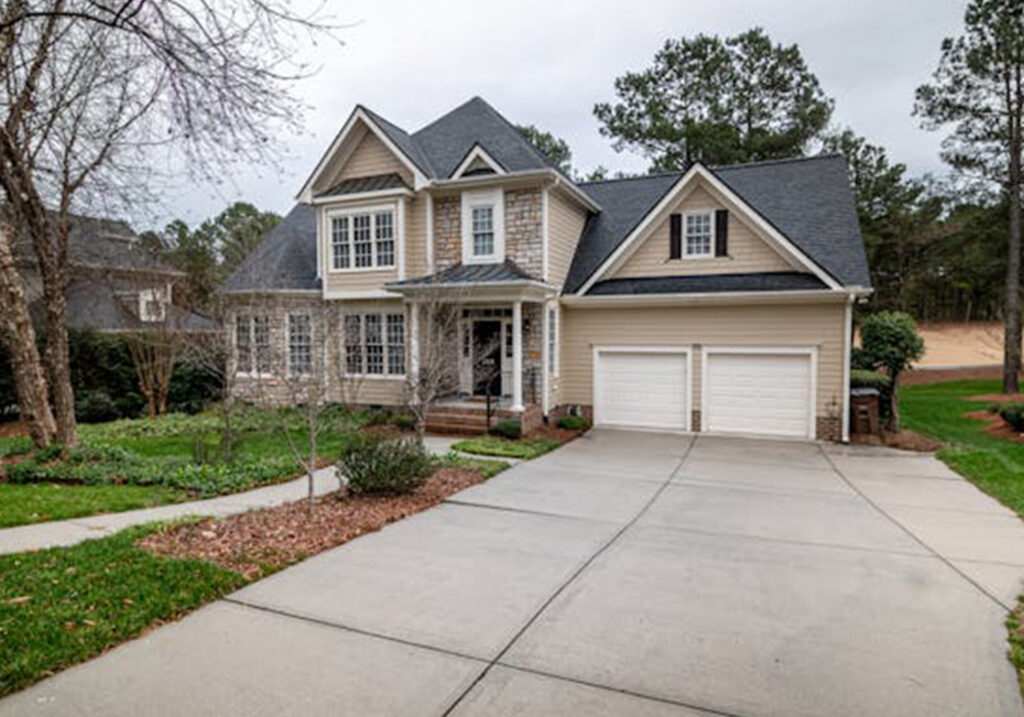Most property owners know the value of adding a garage. It adds value to their property and provides a safe parking space for their vehicles, machinery, equipment, and other tools. However, one misconception that homeowners have is that they can build a new garage whenever they please. After all, it IS their property, right?
Unfortunately, they are wrong. You cannot just wake up one morning and decide to buy the needed materials and just build a garage next to your house. It does not work that way.
Before starting construction, it is important to understand the permits and regulations involved. Compliance with local, state, and federal guidelines ensures your structure is safe, legal, and properly integrated into your property.
This comprehensive guide will cover the permits and regulations required for installing a metal garage, ensuring a smooth and compliant construction process.
Why do you need a permit?
Obtaining a permit for installing a metal garage is essential because it ensures that the structure complies with local building codes and safety regulations. Building codes are designed to protect property owners and the community by establishing standards for construction quality, durability, and safety. Permits ensure that the garage is structurally sound, capable of withstanding weather conditions, and safe for use. Without a permit, you risk building a structure that could pose hazards or violate construction laws, potentially resulting in costly repairs or legal issues.
Permits also help protect your property value and investment. A properly permitted metal garage can positively impact your property’s resale value because it is recognized as a legal and safe addition. If you decide to sell your home in the future, potential buyers and real estate agents will often verify that all structures on the property were built according to code. Unpermitted structures may lead to complications in selling, devaluing your property or even requiring you to remove or modify the garage at your expense.
Securing the necessary permits also helps avoid legal penalties and fines. Many municipalities impose fines or legal action for unauthorized construction, and some may require you to dismantle or alter a non-compliant structure. Permits also streamline the inspection process, allowing officials to verify that every phase of construction meets safety standards. This process protects not only you but also your neighbors and the broader community by ensuring that new structures are built responsibly and safely.
Why are regulations needed when building a garage in your property?
Regulations are essential when building a garage on your property to ensure the safety and structural integrity of the construction. Building codes and zoning laws are designed to protect homeowners, neighbors, and the community by setting standards for materials, design, and construction methods. These regulations help prevent structural failures, fire hazards, and electrical malfunctions by enforcing guidelines on load-bearing capacities, proper ventilation, and safe wiring. By following these codes, homeowners can reduce the risk of accidents and costly repairs, creating a safe and durable structure that adds value to the property.
Additionally, regulations help maintain neighborhood aesthetics and property values. Zoning laws often dictate the size, placement, and appearance of garages to ensure they blend harmoniously with surrounding properties. This prevents the construction of oversized or poorly designed structures that could negatively impact the visual appeal and character of the neighborhood. Regulations also address concerns like proper drainage, setback requirements, and property line boundaries, preventing disputes between neighbors and promoting organized community development.
Environmental and safety considerations are another critical reason for garage construction regulations. Many local codes include guidelines for managing stormwater runoff, controlling soil erosion, and minimizing environmental impact. Energy efficiency standards may also apply, encouraging the use of sustainable materials and proper insulation. These measures not only protect the environment but also contribute to long-term energy savings for homeowners. In summary, building regulations safeguard personal safety, preserve community standards, and promote environmentally responsible construction practices.
1. Understanding Zoning Laws
What Are Zoning Laws?
Zoning laws govern how land can be used in different areas. These regulations dictate the type of structures permitted on a property, their size, and their placement.
How Zoning Laws Affect Metal Garage Installation
- Property Use: Verify if your property is zoned for residential, commercial, or industrial use. Some zones restrict certain types of structures.
- Setback Requirements: These dictate how far the garage must be from property lines, roads, and other structures.
- Height and Size Limitations: Some areas impose restrictions on the height and square footage of outbuildings.
- Usage Restrictions: Certain neighborhoods may limit garages to personal use and prohibit commercial activities.
How to Check Zoning Laws
- Visit your local zoning office or municipal planning department.
- Review online zoning maps and municipal codes.
- Consult with a zoning officer for clarity on restrictions and allowances.
2. Building Permits
What Is a Building Permit?
A building permit is an official approval from your local government, granting permission to begin construction. It ensures that your project complies with local building codes and safety standards.
Why You Need a Building Permit for a Metal Garage
- Structural Safety: Ensures the garage meets safety standards for stability and durability.
- Code Compliance: Verifies adherence to local and state building codes.
- Insurance Coverage: Some insurance policies require proof of permits for coverage.
Steps to Obtain a Building Permit
- Submit Plans: Provide detailed blueprints or diagrams of the proposed garage.
- Application Form: Complete the building permit application from the local building department.
- Pay Fees: Building permit fees vary by location and project size.
- Inspection: Inspectors may visit the site before and after construction.
3. Electrical and Plumbing Permits
When Are Additional Permits Needed?
If you plan to install electrical wiring or plumbing in your metal garage, youll need specific permits for these systems.
Electrical Permits
- Required for lighting, outlets, or any electrical system.
- Must comply with the National Electrical Code (NEC).
- Installation must often be completed by a licensed electrician.
Plumbing Permits
- Needed if installing sinks, drains, or any plumbing fixtures.
- Must meet local plumbing codes and standards.
4. Environmental and Land Use Permits
Environmental Impact Considerations
Some areas require environmental reviews if construction could impact natural resources.
Drainage and Erosion Control
- Permits may be needed to manage stormwater runoff.
- Erosion control plans prevent environmental damage during construction.
Wetlands and Flood Zones
- Building in or near wetlands requires special permits from environmental agencies.
- Construction in flood zones must comply with the National Flood Insurance Program (NFIP) regulations.
5. Homeowners Association (HOA) Regulations
Understanding HOA Rules
If you live in a community with a Homeowners Association (HOA), they may have additional regulations that govern the appearance, size, and placement of any new structures on your property. These rules are designed to maintain neighborhood aesthetics, property values, and community standards, making it essential to review and follow them before constructing a metal garage.
Typical HOA Requirements
- Approval of design and materials.
- Restrictions on size, color, and placement.
- Noise and operational limitations.
Gaining HOA Approval
- Submit your construction plans for approval.
- Follow any guidelines provided by the HOA.
6. State and Local Codes
Adherence to State Building Codes
Adherence to state building codes is crucial in ensuring that construction projects meet established standards for structural integrity, safety, and energy efficiency. These codes, which vary by state, are designed to protect the health and welfare of occupants by regulating aspects such as load-bearing capacity, fire resistance, electrical systems, plumbing, and insulation.
Local Amendments
Local municipalities may have additional requirements that complement state codes.
International Building Code (IBC)
Many regions base their regulations on the IBC, which sets global safety and design standards.
7. Fire Safety Regulations
Fire Codes and Prevention
Fire safety codes may dictate the materials and design of your garage.
Fire-Resistant Materials
Some areas require fire-resistant materials, especially in wildfire-prone regions.
Distance from Other Structures
Setback requirements often include guidelines for fire safety spacing.
8. Accessibility and Utility Easements
Understanding Easements
Easements grant access to utility companies or neighboring properties.
Avoiding Easement Violations
- Check your property deed for easement information.
- Ensure the garage does not encroach on utility access areas.
9. Contractor Licensing and Insurance
Licensed Contractors
Hiring a licensed contractor ensures the work complies with regulations.
Insurance Requirements
Verify that your contractor has liability and workers’ compensation insurance.
10. Inspections and Final Approval
Required Inspections
- Foundation Inspection: Ensures the base meets structural standards.
- Framing Inspection: Verifies the integrity of the garage frame.
- Final Inspection: Confirms the entire structure complies with permits and codes.
Certificate of Occupancy
Some municipalities issue a Certificate of Occupancy after final inspection, authorizing use of the garage.
Conclusion
Installing a metal garage involves applying for various permits and regulations. These can be zoning laws, building permits, environmental considerations, and HOA rules. Understanding and following these guidelines not only ensures a smooth construction process but also protects your investment and property value. Stay informed and compliant so you can enjoy the benefits of a durable, functional, and legally sound metal garage.
Always consult with local authorities and licensed professionals to ensure your project meets all legal requirements. With the right preparation, your metal garage installation will be both efficient and fully compliant.

